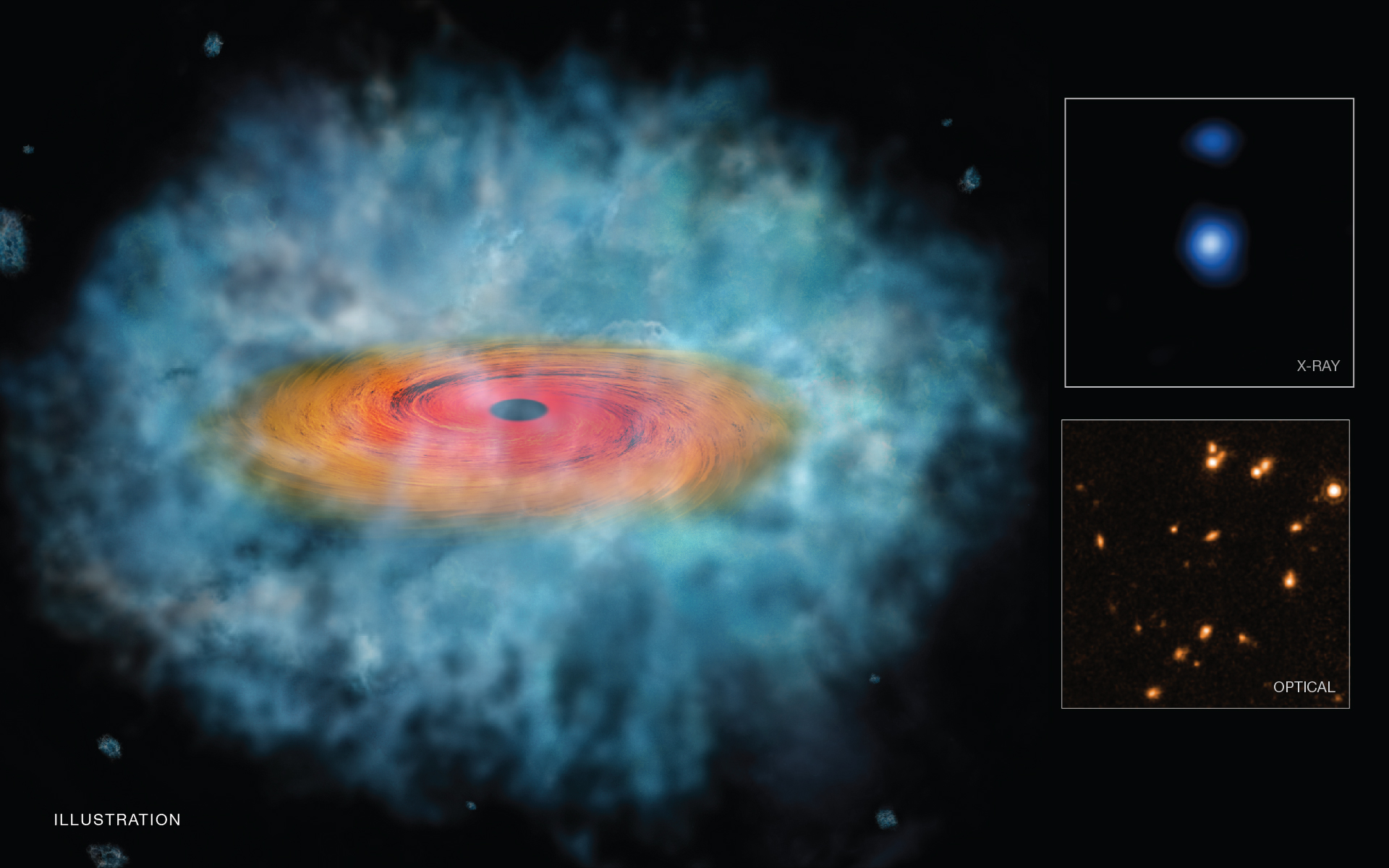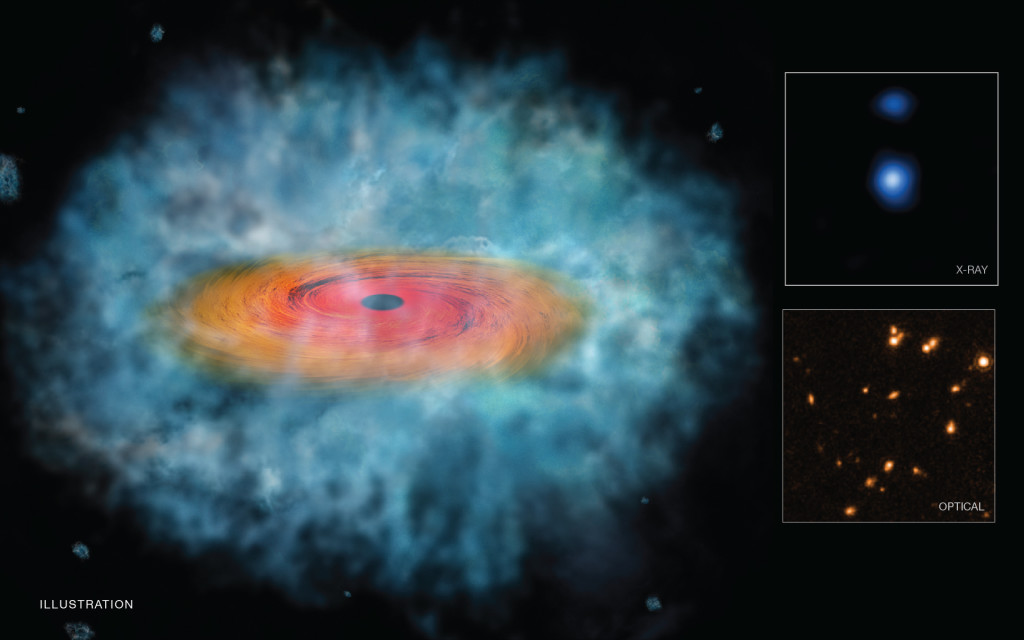Gigantic black holes – where did they come from? A new study could provide the answer.
New evidence suggests that massive black hole seeds are formed from the collapse of giant gas clouds.
A supermassive black hole is at the center of nearly all large galaxies. Some of these black holes contain more mass than millions or billions of suns. A new method was used by researchers to identify candidates from long-exposure images, and the images were provided by the Hubble Space Telescope, Chandra X-ray Observatory and Spitzer Space Telescope space observatories. This method was combined with computer models of black hole seeds.
The new study will appear in the Monthly Notices of the Royal Astronomical Society.
Two strong candidates for black hole seeds were found. It’s possible that the candidates formed when the universe was less than a billion years old.
According to one theory, black hole seeds could have been built by smaller black holes merging as well as gas being pulled in from the surroundings of black hole seeds. That would take much longer than the black holes that formed quickly.
Some of the first black holes bypassed any intermediate phases, the findings suggest. These phases include a massive star’s formation and destruction.
What’s next? Checking whether the two candidate objects have more properties expected for black hole seeds.
In the future, NASA’s James Webb Space Telescope (JWST) will help us learn more about black holes. This new observatory is currently being developed, and will launch in 2018.
Curious to learn more about the observatories used in this study? Check out more information about the space telescopes below:
The Hubble Space Telescope observes the universe in ultraviolet, visual, and near-infrared wavelengths.
The Chandra Observatory makes X-ray observations.
The Spitzer Space Telescope detects infrared radiation.


